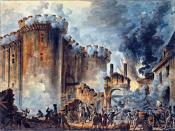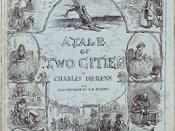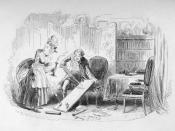In this chapter of Dickens' A Tale of Two Cities, the tension that is building between the poor townspeople and rich aristocrats is beginning to show itself. Monseigneur in Town, is filled with many ironies and significant events that are crucial to the eventual storming of the Bastille. The point where the Marquis runs over and kills a small child with his carriage, Defarge and Madame Defarge standing up for the people, and the running fountain all symbolized and foreshadowed future events.
When the Marquis St. Evremonde left Monseigneur's party in such a rush, it symbolized the arrogance and instability of the entire oligarchy of France. He was ignored by Monseigneur and the rest of the ill-witted partiers and left in disgust. Everyone, including Monseigneur, was so into their orgy of food and other things that they had no sensibilities whatsoever. This showed how weak they actually were, and that all of their thinking was only in their money and nothing else.
Then, when the Marquis left, it showed that they even had no respect for each other. This event greatly foreshadows the toppling of the ruling oligarchy.
When Defarge and Madame Defarge stand up for the people in the town square after the death of the young boy, the taught rope of tension between the poor and rich is snapped and the coming revolution is slightly foreshadowed. Defarge, after hearing Evremonde's arrogant and careless speech stands up and attempts to comfort the boy's father, Gaspard., resulting in Evremonde throwing a coin at him for his intelligence. Gaspard and Defarge represent the now growing louder voice of the people. Then, when Madame Defarge, after Evremonde tries to "pay off" his murder, tosses his worthless money back at him, it shows that the people will soon fight back by throwing...


